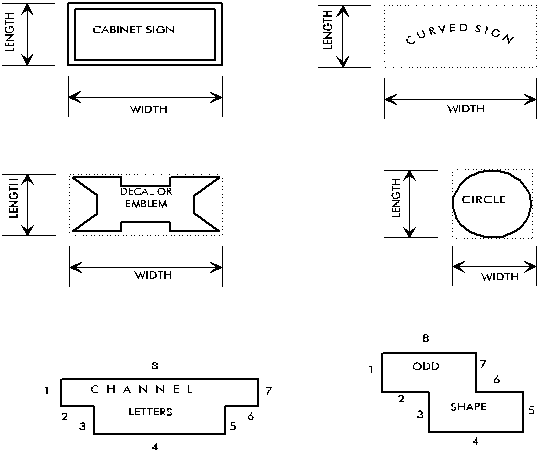Sign area is calculated as follows and depicted in Figure 48-1:

Figure 48-1
Calculation of Sign Area
(A) Single-faced signs.
(1) For signs having a distinct border or boundary, sign area is calculated by multiplying the length times the width or the entire surface contained within the border, boundary, sign board, or sign face.
(2) For signs without distinct border or boundary, sign area is calculated by computing the area of a simple geometric figure consisting of not more than eight perpendicular lines which contains all of the writing, representation, emblem, or other display of the sign.
(B) Double-faced signs. For signs with two identical faces, arranged back to back in parallel planes, and where the sign faces are separated by no more than 24 inches, the sign area must be calculated for one side only.
(C) Multi-faced sign. For a sign with more than one face, where such sign does not meet the standard of a double-face sign described in this section, the area must be calculated by adding together the area of all sign faces visible from any one point.
(D) Measurement of sign height. Sign height is determined by measuring the distance from the base of the sign or sign pole at grade to the top of the highest attached component of the sign. Grade must be construed to be the lower of either:
(1) The existing grade before sign construction; or
(2) The newly established grade after construction, exclusive of any filling, berming, mounding, or excavating solely for the purpose of locating the sign.
(Ord. 1122, passed 10-18-04)